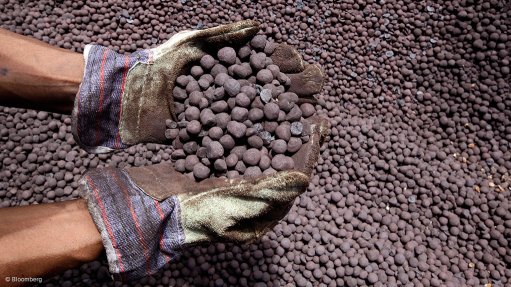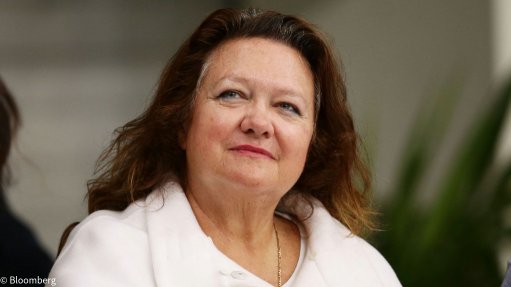Modest mining industry growth on back of political turmoil


ENTERING A DRY SPELL The Mozambique mining industry has been adversely affected by the 2016 debt scandal, legislative changes and escalating tensions between the government and the main opposition
TENSE TIMES Since 2012, government forces have been clashing with armed rebel group turned political party Mozambican National Resistance
Photo by Reuters
Mozambique’s mining industry is expected to increase marginally from $640-million in 2017 to $756-million in 2021, largely as a consequence of the challenging operating environment created by escalating political tensions and minimal public-sector support.
This forecast is made by research company BMI Research, a Fitch group company, in its latest report on the country’s mining industry.
BMI commodities analyst Sabrin Chowdhury says the Mozambique mining industry has been adversely affected by escalating clashes between the militant organisation Mozambican National Resistance and government forces, as well as weak access to credit facilities and endemic corruption. “This challenging operating environment will present a headwind to foreign mining investment over the coming quarters.”
Chowdhury cites the country’s 2016 debt scandal, where government failed to declare $1.4-billion in debt, as an additional hindrance to mining development, as it resulted in the suspension of aid from key donors, including the International Monetary Fund, the World Bank and the UK, as well as 13 other governments. This, in turn, forced government to redirect revenue and support intended for mining.
“. . . government’s decision not to honour a $178-million interest repayment, due in late May 2016, heralds several years of economic malaise over our medium-term outlook,” says Chowdhury.
Further, legal risks and considerable financial barriers have reduced the trade and investment openness of an “otherwise attractive market”. Additionally, Mozambique passed the Resource Tax Law in 2014, aiming to increase the State’s control and participation in the mining, oil and gas sectors, which may deter investors. The law states that “any transfer of control – whether direct or indirect – in mining holding permits is now subject to the consent of the Mozambican government.”
Additionally, the law created the Instituto Nacional de Minas, a regulatory body under the Ministry of Mineral Resources, which is responsible for overseeing mining activity.
The law notes that “the mining contract must contain rules concerning the participation of the State in the mining venture, local content minimum standards, employment and training of Mozambicans and a memorandum of understanding between government, the relevant company and the local communities”.
The law has been in effect since January 1, 2015; however, companies that are complying with their obligations based on existing concession agreements signed under the previous law will continue to do so, except if they submit an express application to apply the new regime.
As a result, BMI expects that there will be “minimal levels of investment in any projects requiring public-sector support, as well as increased borrowing costs and escalating political risk” over the next five years.
Chowdhury notes that, beyond 2021, the outlook will improve significantly, as BMI expects projects in Mozambique’s gas sector to progress. He cites government’s plans to establish an industrial free trade zone in the Revobue region, in Tete, between the districts of Chiuta and Moatize, as a key factor in the growth and development of gas projects.
Key Commodities
Chowdhury believes that the coal sector will continue to dominate Mozambique’s mining industry value, despite its lacklustre production growth outlook. “The . . . sector will face downside risks to production growth, as underdeveloped infrastructure and economic instability deter greenfield investment. We forecast that Mozambique’s coal production will increase modestly, from 7.2-million tonnes in 2017 to 8.2-million tonnes by 2021, accounting for less than 1% of global output.”
He notes that improving coal prices, particularly that of coking coal, will encourage miners to ramp up output at stalled mines over the coming quarters, but longer-term growth will remain subdued.
As an example of this subdued growth, Chowdhury cites Mozambique’s largest coal mine, Brazil-based Vale’s Moatize mine, which fell short of the projected ten-million tonnes for 2016, reaching only 5.5-million, owing to a delayed start-up of the Moatize II plant and supply constraints regarding explosives.
There will also be muted production growth in the gold mining sector because of the limited presence of industrial gold mining operations, he notes. “We forecast the country to produce 690 000 oz of gold in 2017, increasing to 710 000 oz of gold by 2021,” says Chowdhury.
He adds that the increasing regulation of gold mining activity will support the sector’s long-term production outlook as government is encouraging artisanal and illegal miners to adopt legal status.
Key Projects A project highlighted by Chowdhury is the Moatize coal mine, owned by special purpose vehicle International Coal Ventures Private Limited (ICVL). It was acquired from mining major Rio Tinto in 2014, giving ICVL control of one of Mozambique’s largest coal mines. ICVL is a joint venture comprising the Steel Authority of India, Coal India, Indian steel company Rashtriya Ispat Nigam, Indian power utility NTPC and India’s State-controlled iron-ore company National Mineral Development Corporation. It was set up in 2009 to acquire coal assets abroad for the Indian steel units.
Also of note is Mozambique-focused miner Xtract Resources’ Manica gold deposit, which was acquired from Auroch Minerals for about $12.5-million in 2015 and has progressed past the definitive feasibility study stage.
Chowdhury notes that the deposit is estimated to have 923 200 oz of gold, of which 29 600 oz are in the measured category, 263 300 oz are in the indicated category and 368 300 oz are in the inferred category. “Tests have shown that the project can recover between 74% and 78% of gold from the deposit.”
Comments
Press Office
Announcements
What's On
Subscribe to improve your user experience...
Option 1 (equivalent of R125 a month):
Receive a weekly copy of Creamer Media's Engineering News & Mining Weekly magazine
(print copy for those in South Africa and e-magazine for those outside of South Africa)
Receive daily email newsletters
Access to full search results
Access archive of magazine back copies
Access to Projects in Progress
Access to ONE Research Report of your choice in PDF format
Option 2 (equivalent of R375 a month):
All benefits from Option 1
PLUS
Access to Creamer Media's Research Channel Africa for ALL Research Reports, in PDF format, on various industrial and mining sectors
including Electricity; Water; Energy Transition; Hydrogen; Roads, Rail and Ports; Coal; Gold; Platinum; Battery Metals; etc.
Already a subscriber?
Forgotten your password?
Receive weekly copy of Creamer Media's Engineering News & Mining Weekly magazine (print copy for those in South Africa and e-magazine for those outside of South Africa)
➕
Recieve daily email newsletters
➕
Access to full search results
➕
Access archive of magazine back copies
➕
Access to Projects in Progress
➕
Access to ONE Research Report of your choice in PDF format
RESEARCH CHANNEL AFRICA
R4500 (equivalent of R375 a month)
SUBSCRIBEAll benefits from Option 1
➕
Access to Creamer Media's Research Channel Africa for ALL Research Reports on various industrial and mining sectors, in PDF format, including on:
Electricity
➕
Water
➕
Energy Transition
➕
Hydrogen
➕
Roads, Rail and Ports
➕
Coal
➕
Gold
➕
Platinum
➕
Battery Metals
➕
etc.
Receive all benefits from Option 1 or Option 2 delivered to numerous people at your company
➕
Multiple User names and Passwords for simultaneous log-ins
➕
Intranet integration access to all in your organisation



















